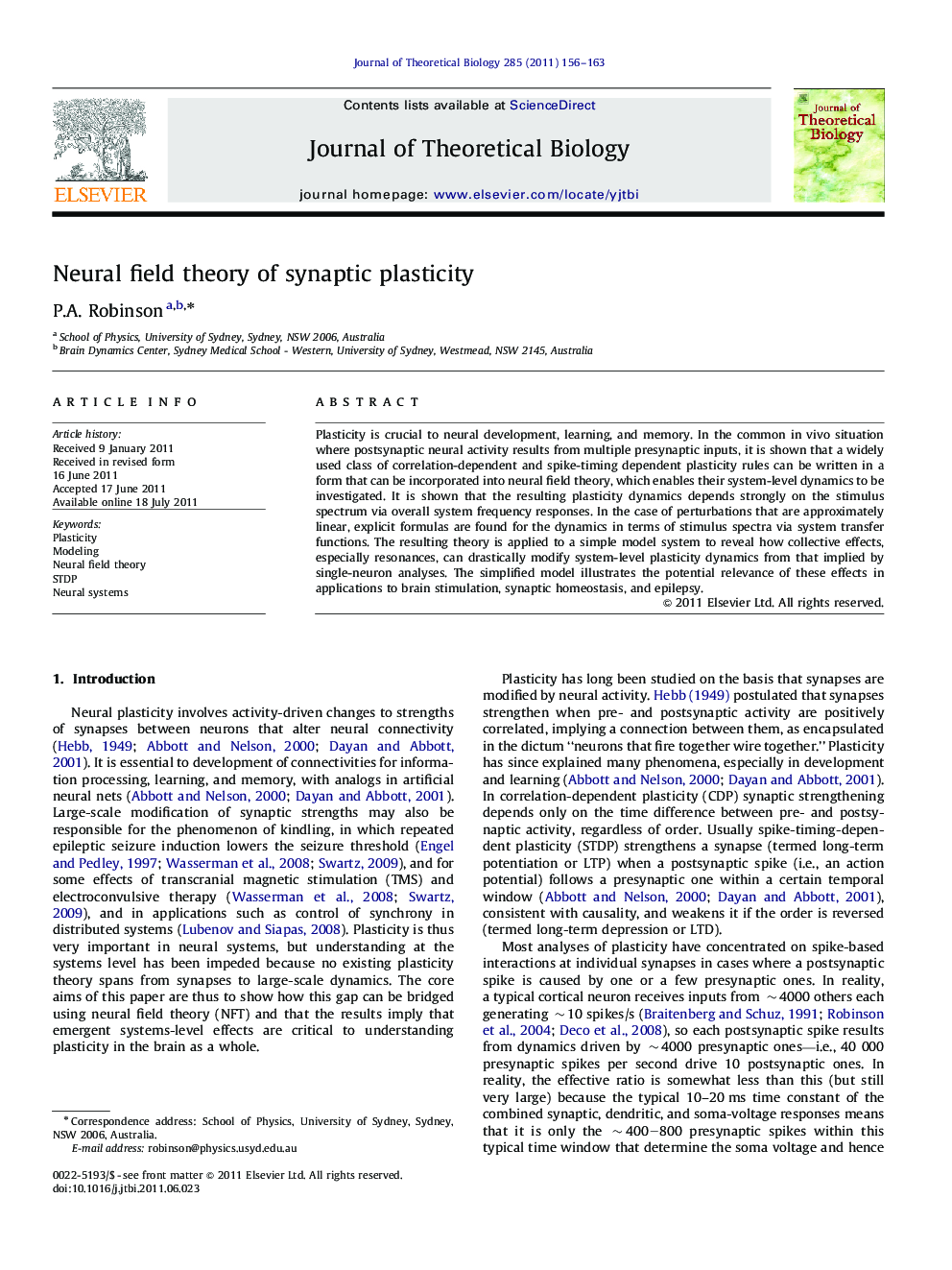| Article ID | Journal | Published Year | Pages | File Type |
|---|---|---|---|---|
| 4496995 | Journal of Theoretical Biology | 2011 | 8 Pages |
Plasticity is crucial to neural development, learning, and memory. In the common in vivo situation where postsynaptic neural activity results from multiple presynaptic inputs, it is shown that a widely used class of correlation-dependent and spike-timing dependent plasticity rules can be written in a form that can be incorporated into neural field theory, which enables their system-level dynamics to be investigated. It is shown that the resulting plasticity dynamics depends strongly on the stimulus spectrum via overall system frequency responses. In the case of perturbations that are approximately linear, explicit formulas are found for the dynamics in terms of stimulus spectra via system transfer functions. The resulting theory is applied to a simple model system to reveal how collective effects, especially resonances, can drastically modify system-level plasticity dynamics from that implied by single-neuron analyses. The simplified model illustrates the potential relevance of these effects in applications to brain stimulation, synaptic homeostasis, and epilepsy.
► The paper incorporates plasticity into neural field theory. ► It uses a widely applicable plasticity rule that encompasses STDP and classical Hebbian plasticity. ► Results show that network effects strongly affect plasticity, sometimes reversing LTP and LTD. ► Illustrative applications show the potential to address areas like sleep, TMS, and epilepsy.
